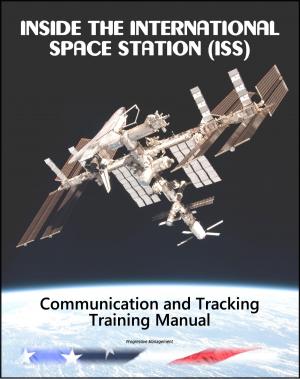The Mineless Battlespace: Shaping the Future Battlefield without Conventional Landmines - History and Evolution of Landmines, Support for the Ban, Humanitarian Crisis, Doctrines for Alternatives
Nonfiction, History, Military, Weapons, United States| Author: | Progressive Management | ISBN: | 9781311053145 |
| Publisher: | Progressive Management | Publication: | May 20, 2016 |
| Imprint: | Smashwords Edition | Language: | English |
| Author: | Progressive Management |
| ISBN: | 9781311053145 |
| Publisher: | Progressive Management |
| Publication: | May 20, 2016 |
| Imprint: | Smashwords Edition |
| Language: | English |
Professionally converted for accurate flowing-text e-book format reproduction, this unique book examines the ability of the United States Army to shape the battlefield without the use of conventional landmines. The United States must determine alternatives to conducting warfare without the use of landmines. The humanitarian crisis landmines create calls for this and current and future technologies make it possible. Weapons that cannot discriminate between combatant and non-combatant will lose their legitimacy in the future battlespace. This study traces the evolution of landmines and their purposes. It then reviews current American, British, and Canadian counter-mobility doctrine in order to establish a foundation to build upon. With this solid foundation of the past and present, the study then progresses to address how the United States can shape the future battlespace. This study offers alternatives to conventional landmines through technology, doctrine, and training.
Through their evolution, landmines have become an effective force enabler in the conduct of land warfare, but in recent times their usefulness has diminished. Situational and scatterable landmines have increased importance in the changing environment. The evolution of the humanitarian crisis from their use supports a complete ban on the use of conventional landmines. The costs associated with landmine use are mind numbing. Medical and rehabilitation costs alone exceed $750 million.
The changing security environment also presents the potential necessity to shape the battlefield without conventional landmines. The Ottawa Treaty restricts the use of anti-personnel landmines and many nations have become signatories to it. The United States Army may have to employ the objective force in a nation or with a nation that is a signatory. Should that be the case, the force will be compelled to abide the articles of the Ottawa treaty and therefore be required to replicate that capability with existing systems/doctrine or develop them.
This study concludes by offering recommendations to shaping the battlefield without conventional landmines. In many respects the United States Army currently shapes the battlefield without the use of landmines. Doctrine provides the means to shape enemy formations. Deception combined with long range fires, including air interdiction; shape the battlefield for the decisive operations. Increased technologies mainly in the intelligence arena allow precision deep fires to destroy enemy forces prior to ground contact. Non-lethal alternatives also exist to replace the function of landmines. Electromagnetic pulse weapons could revolutionize ground warfare and leave the battlefield safe to traverse following the conflict. The recommendations outlined in this paper are based on emerging doctrine and provide for humanitarian friendly alternatives to landmines. Future battlefields can become truly mineless.
CHAPTER ONE - THE EVOLUTION OF LANDMINES AND THEIR ROLE * The Early Years * The American Civil War * The Great War * The Interwar Developments * World War II * The Korean War * The Vietnam War * Post-Vietnam * Conclusion * CHAPTER TWO - SUPPORT FOR THE BAN * The Law of War * Certain Conventional Weapons Convention * Arguments for the Ottawa Convention * Summary * CHAPTER THREE - THE MODERN BATTLESPACE ENVIRONMENT * How the American Army Does It * How the British Army Does It * How the Canadian Army Does It * Summary * CHAPTER FOUR - THE FUTURE BATTLESPACE * The Objective Force * Summary * CHAPTER FIVE - ANALYSIS/RECOMMENDATIONS * Doctrine * Training * Materiel
Professionally converted for accurate flowing-text e-book format reproduction, this unique book examines the ability of the United States Army to shape the battlefield without the use of conventional landmines. The United States must determine alternatives to conducting warfare without the use of landmines. The humanitarian crisis landmines create calls for this and current and future technologies make it possible. Weapons that cannot discriminate between combatant and non-combatant will lose their legitimacy in the future battlespace. This study traces the evolution of landmines and their purposes. It then reviews current American, British, and Canadian counter-mobility doctrine in order to establish a foundation to build upon. With this solid foundation of the past and present, the study then progresses to address how the United States can shape the future battlespace. This study offers alternatives to conventional landmines through technology, doctrine, and training.
Through their evolution, landmines have become an effective force enabler in the conduct of land warfare, but in recent times their usefulness has diminished. Situational and scatterable landmines have increased importance in the changing environment. The evolution of the humanitarian crisis from their use supports a complete ban on the use of conventional landmines. The costs associated with landmine use are mind numbing. Medical and rehabilitation costs alone exceed $750 million.
The changing security environment also presents the potential necessity to shape the battlefield without conventional landmines. The Ottawa Treaty restricts the use of anti-personnel landmines and many nations have become signatories to it. The United States Army may have to employ the objective force in a nation or with a nation that is a signatory. Should that be the case, the force will be compelled to abide the articles of the Ottawa treaty and therefore be required to replicate that capability with existing systems/doctrine or develop them.
This study concludes by offering recommendations to shaping the battlefield without conventional landmines. In many respects the United States Army currently shapes the battlefield without the use of landmines. Doctrine provides the means to shape enemy formations. Deception combined with long range fires, including air interdiction; shape the battlefield for the decisive operations. Increased technologies mainly in the intelligence arena allow precision deep fires to destroy enemy forces prior to ground contact. Non-lethal alternatives also exist to replace the function of landmines. Electromagnetic pulse weapons could revolutionize ground warfare and leave the battlefield safe to traverse following the conflict. The recommendations outlined in this paper are based on emerging doctrine and provide for humanitarian friendly alternatives to landmines. Future battlefields can become truly mineless.
CHAPTER ONE - THE EVOLUTION OF LANDMINES AND THEIR ROLE * The Early Years * The American Civil War * The Great War * The Interwar Developments * World War II * The Korean War * The Vietnam War * Post-Vietnam * Conclusion * CHAPTER TWO - SUPPORT FOR THE BAN * The Law of War * Certain Conventional Weapons Convention * Arguments for the Ottawa Convention * Summary * CHAPTER THREE - THE MODERN BATTLESPACE ENVIRONMENT * How the American Army Does It * How the British Army Does It * How the Canadian Army Does It * Summary * CHAPTER FOUR - THE FUTURE BATTLESPACE * The Objective Force * Summary * CHAPTER FIVE - ANALYSIS/RECOMMENDATIONS * Doctrine * Training * Materiel















